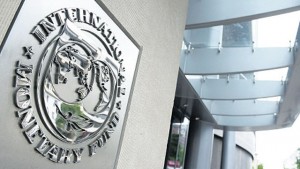 BASSETERRE, St Kitts-Nevis (CMC) – The International Monetary Fund (IMF) says St Kitts-Nevis is at a turning point where the twin island Federation has the opportunity to establish itself on a sustainable long-term growth pattern.
BASSETERRE, St Kitts-Nevis (CMC) – The International Monetary Fund (IMF) says St Kitts-Nevis is at a turning point where the twin island Federation has the opportunity to establish itself on a sustainable long-term growth pattern.
An IMF delegation has just ended a two week visit to the island and it said in order to achieve that goal, St Kitts-Nevis would have to make “difficult decisions and careful choices to preserve the hard-earned gains.
“It will also require continued fiscal discipline and the implementation of structural reforms to expand growth potential,” said Judith Gold, who headed the mission.
She said macroeconomic conditions improved significantly over 2013 and 2014 and that the economy recorded two years of strong growth, averaging about six per cent annually, the strongest in the region by far.
“This reflects primarily a construction boom fuelled by inflows under the Citizenship by Investment programme (CIP); government and Sugar Industry Diversification Foundation (SIDF) investment and spending, including on the People’s Employment Programme (PEP); and a continued recovery in tourist arrivals.”
She said employment expanded by 23 per cent over the two years, while inflation has remained low. Banks have remained stable following debt restructuring, although the NPL ratio significantly increased notably due to removing public sector loans from the total loan portfolio following the debt-for-land swap. Credit to the private sector is still sluggish, expanding by 0.5 per cent in 2014.
““The outlook for 2015 remains positive, although the pace of expansion is expected to moderate to about 4.5 per cent. However, there is uncertainty as a result of the imposition of travel restrictions by Canada, combined with new competition on the CIP front from neighbouring countries.”
Gold said that over the medium term, the IMF projects a return to more moderate growth rates, as construction projects conclude and the tourism sector continues to expand.
She said a strong fiscal performance was supported by a robust outturn in tax revenues, more than compensating for higher-than-planned expenditures, including the 13th -month wage bonus.
“CIP revenues to the budget increased to about 14 per cent of GDP (gross domestic product), slightly higher than in 2013. As a result, the government surplus after grants was a healthy 9.5 per cent of GDP, somewhat smaller than in 2013, but only on account of considerably less SIDF support.”
She said that the strong fiscal outcome, combined with additional progress with the debt/land swaps, and some advance debt repayment, led to a further decline in the share of public debt in GDP to 80 per cent at end-2014, compared to over 100 per cent at end-2013, and about 160 per cent in 2010.
Gold said St. Kitts and Nevis’ debt-to-GDP ratio is now below the Eastern Caribbean Currency Union (ECCU) average.
“The authorities should take corrective measures to prevent adverse impact to government’s finances from the new exemptions to value added tax and import duties, introduced in December 2014 and April 2015.”
Gold said while the government’s current surplus position allows it to absorb the impact in the short term; it implies growing reliance on volatile CIP inflows to finance government operations and could undermine efforts to reduce the debt-to-GDP ratio to the 60 percent target by 2020.
“We therefore encourage the authorities to implement corrective measures to close the gap created by these exemptions, including substantially reducing tax exemptions to construction projects, while continuing to implement other structural reforms that are already in train, including reforming the civil service and improving public financial management.
“We commended the authorities for their commitment to and progress with reform of the CBI program, and encourage them to accelerate the pace of implementation. We also welcome their efforts to enhance cooperation with neighbouring islands, which will help make the programs sustainable.”
The IMF official said that the rapid growth of CIP revenues and increased government savings provide an opportunity to build precautionary buffers to help deal with future exogenous shocks.
“Increased uncertainty regarding CIP inflows underscores the importance of careful use and preservation of the stock of accumulated savings. The team recommends the adoption of an effective and transparent framework to manage the CIP inflows and savings in the banking system, as well as more stringent oversight of development projects.
“ The SIDF operations should also be reviewed, and its audited accounts should be made available to the public. Moreover, the strong economic environment provides an opportunity to streamline PEP’s operations and reinforce the temporary nature of its programme,” she added.
